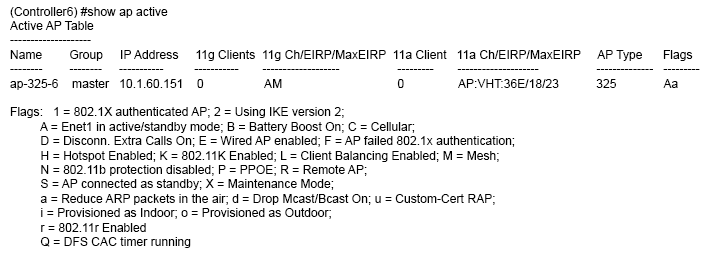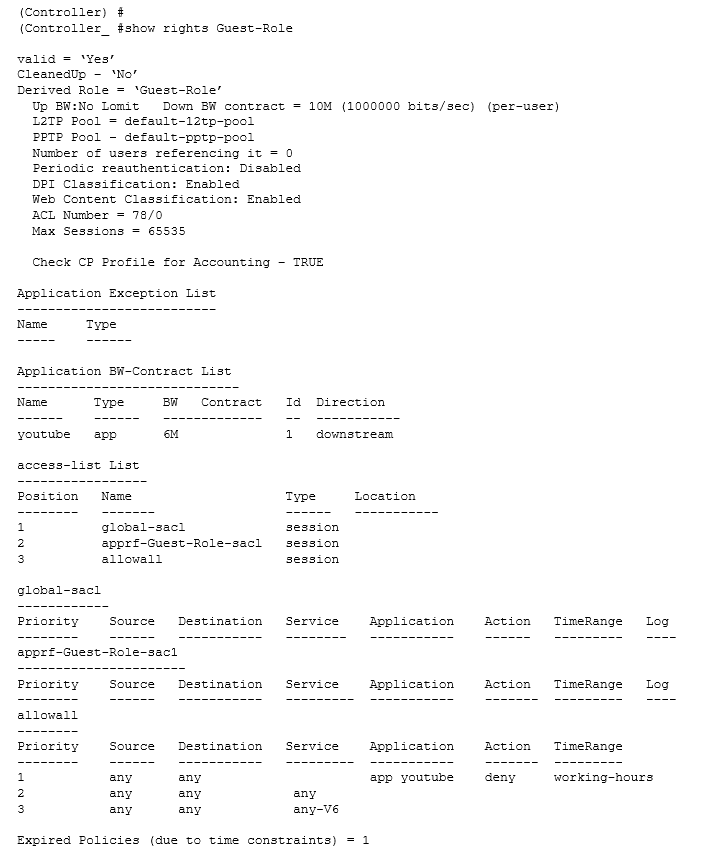HPE6-A40 Exam Questions
- Topic 1: Configure and troubleshoot the controller and the AP network infrastructure
- Topic 2: Plan and configure AirWave and the controller
- Topic 3: Design and implement firewall policies and role designs
Free HP HPE6-A40 Exam Actual Questions
Note: Premium Questions for HPE6-A40 were last updated On 25-09-2019 (see below)
Refer to the exhibit.

An end user attempts to connect to the company's campus network and cannot find the enterprise SSID even though there is an AP operating engineer attempts to resolve the end user's connectivity problem and issues the show ap active command on the controller shown in the exhibit.
What are the possible reasons why the end user cannot find the enterprise SSID? (Choose two.)
A network engineer plans for a corporate WLAN that must support 802.1x authentication. Based on best practices, the engineer plans to deploy a 7210 controller as an active local controller and terminate 100 CAPSs in the primary data center. In a secondary data center, the engineer plans to deploy two 7030 controllers as standby local controllers and terminated 20 CAPs. The engineer notices that three is unstable and up predictability transmission latency between the two sites.
What should the engineer do to configure this solution according to HA best practices?
According to the client steering logic for sticky clients in the Aruba Client Match feature, what is true about the client movement to the new AP?
A network engineer configures two controllers for VRRRP. The engineer expects the status of the controllers to be master and backup, but notices that both controllers have statuses of master.
What is a possible reason?
Refer to the exhibits on the tabs.
Exhibit 1

Exhibit 2

A network engineer deploys AppRF on a testing SSID. All necessary command output lists are shown in the exhibits, and the SSID uses this configuration:
Client Role: Guest-Role
Forwarding mode: Tunnel
The network engineer adds some comprehensive restriction measures for the YouTube application on the controller, such as AppRF restriction, time-range. DPI, and so on. According to the command output shown in the exhibits, what can be concluded about AppRF restrictions?
- Select Question Types you want
- Set your Desired Pass Percentage
- Allocate Time (Hours : Minutes)
- Create Multiple Practice tests with Limited Questions
- Customer Support
Currently there are no comments in this discussion, be the first to comment!